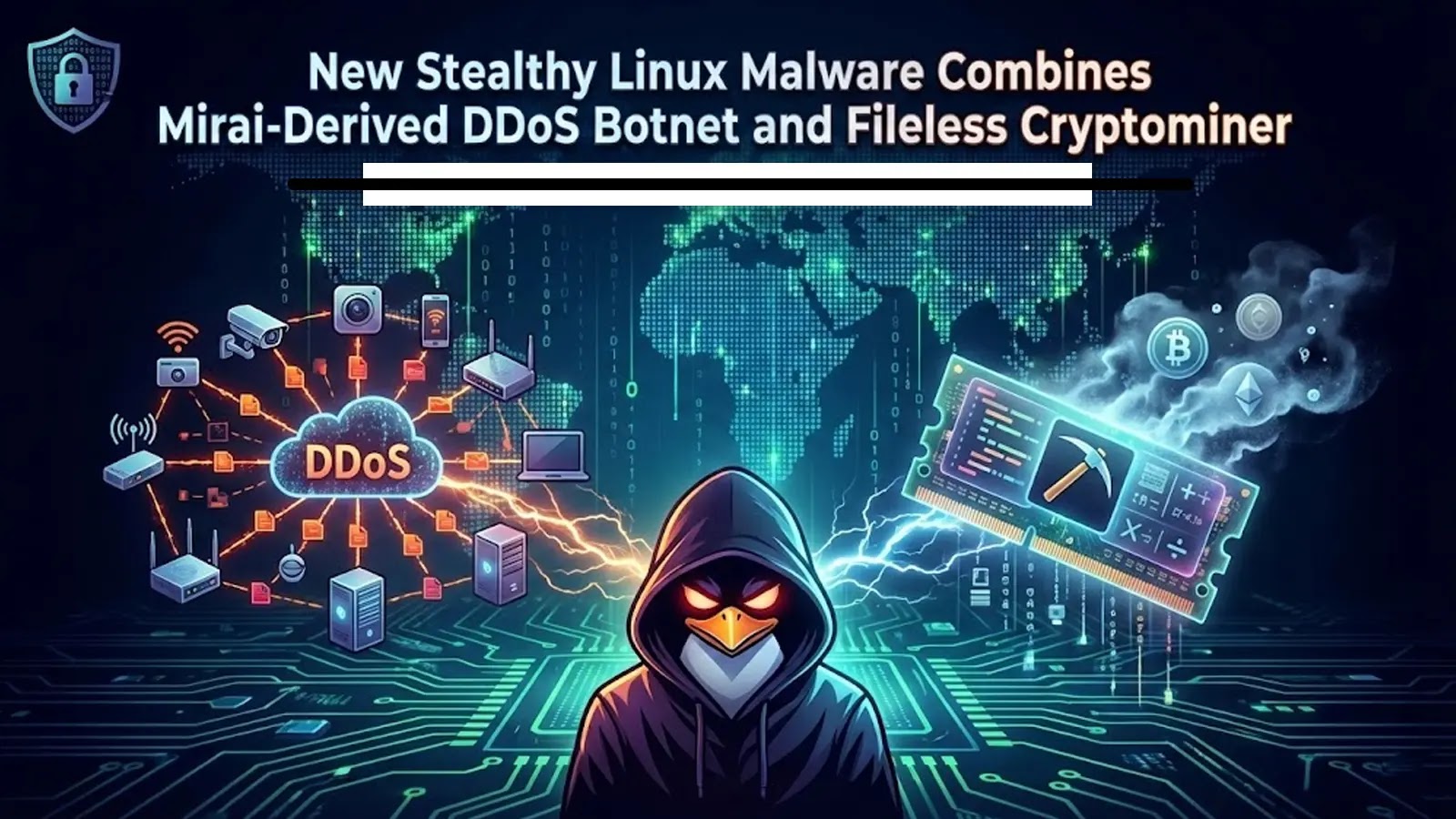A new and sophisticated Linux malware, dubbed ‘Koske,’ has surfaced, showcasing the integration of artificial intelligence (AI) in its development. This malware employs AI-generated code and utilizes seemingly innocuous JPEG images of panda bears to infiltrate systems, deploying cryptomining rootkits directly into system memory.
Initial Access and Delivery Mechanism
The attack initiates by exploiting misconfigured JupyterLab instances exposed to the internet. Once access is gained, the attackers download two JPEG images from legitimate hosting platforms such as Postimage, OVH Images, and Freeimage. These images are polyglot files, meaning they function both as standard images and executable scripts. When viewed, they display harmless panda images; however, they also contain appended malicious shellcode that executes upon opening, allowing the attackers to run arbitrary commands on the compromised system.
AI-Assisted Development and Capabilities
Researchers from Aqua Security’s cybersecurity team, Aqua Nautilus, have analyzed Koske and suggest that its development was significantly aided by AI, particularly large language models (LLMs). The malware exhibits advanced features, including modular payloads, evasive rootkits, and adaptive persistence mechanisms. The code is characterized by well-structured comments, modularity, and best-practice logic flow, indicating the influence of AI in its creation.
Persistence and Evasion Techniques
Koske employs multiple tactics to maintain persistence and evade detection:
– Rootkit Deployment: The malware compiles and loads a rootkit into memory, which hooks into system functions like `readdir()` to conceal its presence by hiding files and processes associated with the malware.
– System Modification: It modifies system files such as `.bashrc`, `rc.local`, and cron jobs to ensure it remains active across reboots.
– Network Configuration Alteration: Koske changes DNS settings to use public servers like Google and Cloudflare, clears firewall rules, and adjusts proxy settings to maintain communication with its command-and-control (C2) infrastructure.
Cryptocurrency Mining Operations
Once established, Koske assesses the infected system’s CPU and GPU capabilities to deploy optimized cryptocurrency miners. It supports mining over 18 different cryptocurrencies, including Monero, Ravencoin, Zano, Nexa, and Tari. The malware intelligently selects the most profitable coin to mine based on system resources and network conditions. If mining operations fail, it automatically switches to alternative mining pools or cryptocurrencies, demonstrating a high level of adaptability.
Indicators of Compromise (IoCs)
To detect potential infections, security teams should monitor for the following indicators:
– Unauthorized Modifications: Unexpected changes to system files like `.bashrc`, `rc.local`, and cron jobs.
– Network Anomalies: Unusual DNS configurations pointing to public servers, cleared firewall rules, and altered proxy settings.
– Resource Utilization: Unexplained high CPU and GPU usage, which may indicate cryptomining activities.
Mitigation Strategies
To protect against Koske and similar threats, consider implementing the following measures:
– System Hardening: Regularly update and patch systems to address vulnerabilities.
– Access Controls: Limit exposure of development environments like JupyterLab to the internet and enforce strong authentication mechanisms.
– File Integrity Monitoring: Deploy tools to detect unauthorized changes to critical system files.
– Network Security: Implement strict firewall rules, monitor DNS configurations, and control proxy settings to prevent unauthorized communications.
– Behavioral Analysis: Utilize security solutions capable of detecting anomalous behaviors, such as unexpected resource utilization or unauthorized system modifications.
Conclusion
The emergence of Koske underscores the evolving landscape of cyber threats, where attackers leverage AI to develop more sophisticated and evasive malware. By understanding its mechanisms and implementing robust security practices, organizations can better defend against such advanced threats.



